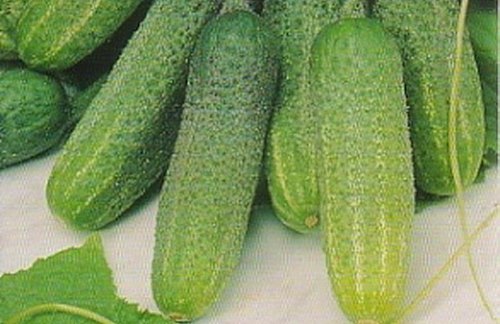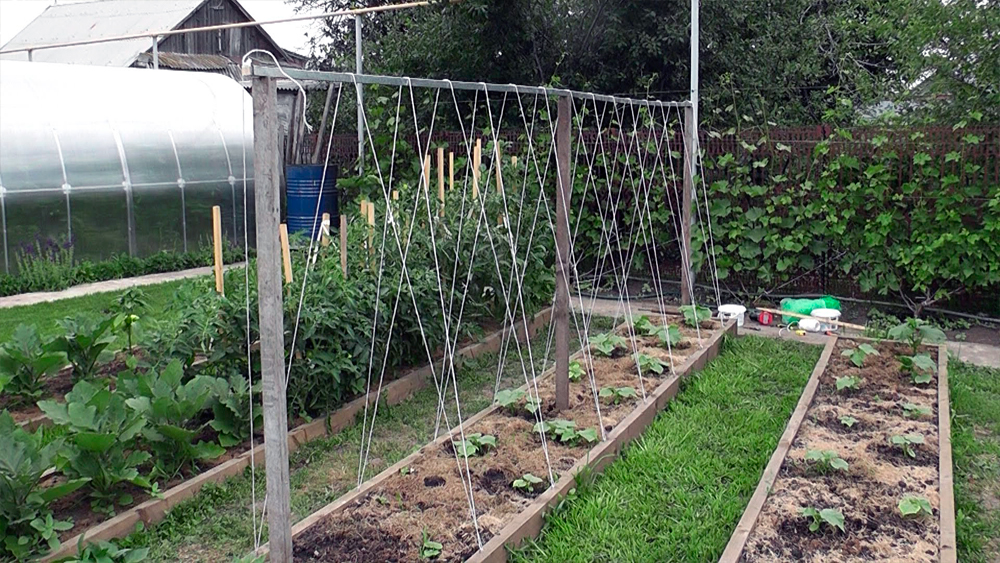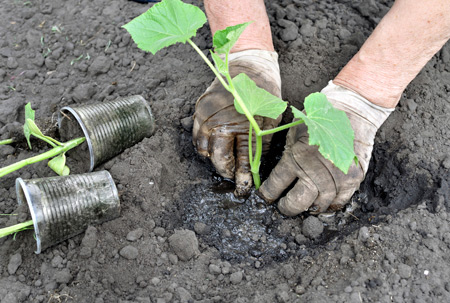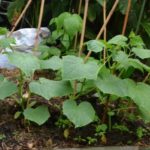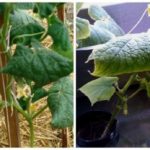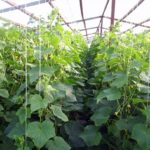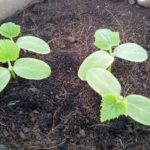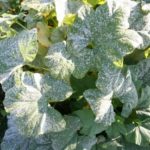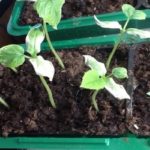Adam cucumbers are a hybrid of the Dutch breeding company Bejo. They show early ripening and excellent harvest in the Russian climate. Used fresh, pickled and pickled.
The proven qualities of gherkins show perfect properties created by one of the world's leading breeding leaders. Recommended for cultivation in open and closed ground, including greenhouses, greenhouses and temporary structures.
Hybrid presentation
Parthenocarpic cucumber Adam f1 has a vigorous and medium-climbing bush of the female flowering type.Abundant fruiting occurs in the period from 41 to 52 days from the moment of planting, lasting throughout the growing season. From 1 sq. m you can collect 8-10 kg of gherkins. The small green leaves vary in color and may be darker on some bushes.
The characteristics of cucumbers are the even shape of the fruit, dark green in color with light stripes and slight spotting. The average length of the greens is 12 cm with a diameter of 3-4 cm and a weight of 92 grams. There is a finely tuberculate surface and white pubescence.
The cucumber variety has crisp, juicy flesh with thin skin and small seeds, as well as a significant aroma and pleasant taste.
In 2002, it was entered into the State Register of the Russian Federation as a plant intended for cultivation on farms, gardens, vegetable gardens and personal plots of our country.
Advantages and disadvantages
The disadvantages of the hybrid include only one - the female type of flowering, which is characterized by the presence of 90% of the bushes, without the possibility of cross-pollination with other varieties.
Description of benefits:
- Early ripeness.
- Continuous fruiting.
- Stable yield.
- Excellent product characteristics.
- Duration of storage.
- Transportability.
- Excellent taste.
- Good regeneration is a high indicator for similar hybrid varieties, recovery from severe stressful environmental conditions.
- Versatility in use: pickling, pickling, salads.
- Disease resistance: cladosporiosis, cucumber mosaic, powdery mildew.
- It does not lose its worthy qualities if harvested at the wrong time, only slightly increasing in width.
Low resistance to disease - downy mildew is 3 points.
Landing technology
The variety is grown both in greenhouses and on unprotected soil. Before direct sowing of seeds in open beds, they do not require heating or processing. The spring period of the second half of May - early June is ideal for planting. When dividing ridges, the planting pattern should be taken into account - 30x70 cm.
The formation of seedlings begins in early April at a soil temperature of at least 15°C and an air temperature of 18-20°C. The hardening procedure takes place in the refrigerator for a day. Before planting, seeds are pecked in warm water.
Cucumbers Adam f1 - correct planting for seedlings:
- a planting container in the form of plastic or peat pots is prepared;
- filled with nutritious soil;
- a depression of 2-3 cm is made in the middle;
- seeds are introduced;
- sprinkled with earth.
The temperature for further growth of seed material is maintained within 24-28°C. To avoid stretching the bush, additional illumination is carried out with a decrease in temperature to 20°C. When the seedlings reach 3-4 mature leaves, they are transplanted to a permanent place, no later than 4 weeks.
Cucumbers are demanding on soil quality, sunlight and warmth. The planting bed is supplemented with the addition of organic fertilizers. Planting seedlings for a greenhouse is carried out according to the same scheme as in open ground.
Preferably growing on a trellis or net promotes a convenient and easy harvesting process.
Recommendations for care and cultivation
Careful and constant care of the plant allows you to form excellent gherkins.
Recommendations for care and cultivation:
- To increase the yield, when the 6th leaf appears, pinch the main stem.
- Periodically clear the soil of weeds.
- Hill up the bushes with shallow loosening of the soil every 10 days to avoid exposing the root system.
- Measure soil moisture and prevent it from drying out.
- Irrigation water should be warm - 24°C.
- Mulch with organic matter to slow the spread of weeds.
- Irrigation procedures for cucumbers should be carried out every week until flowering.
- During fruiting, daily watering is carried out.
- Alternating fertilizing with organic and mineral fertilizers is carried out 5 times throughout the entire season.
It is not recommended to cultivate a hybrid for 5 consecutive seasons in the same place - the risk of infection by pests and diseases increases.
Objective opinion about the hybrid
Reviews about the hybrid mostly reflect its positive side. Many gardeners highlight the variety for its rapid growth, continuous fruiting and productivity. Attractive appearance has a special consumer demand. Especially the moderately dense, crunchy pulp of cucumbers with a large number of fruits on one bush is a priority.
The seeds were treated with an antifungal drug. A modern remedy from the Siberian AgroSoyuz company is effective protection. The acquired emerald color protects them from cucumber diseases. The active ingredients of the coating also help speed up the germination of young seedlings.
Implementing the correct approach to caring for a hybrid will soon reward any gardener with excellent fruiting of delicious gherkins.

